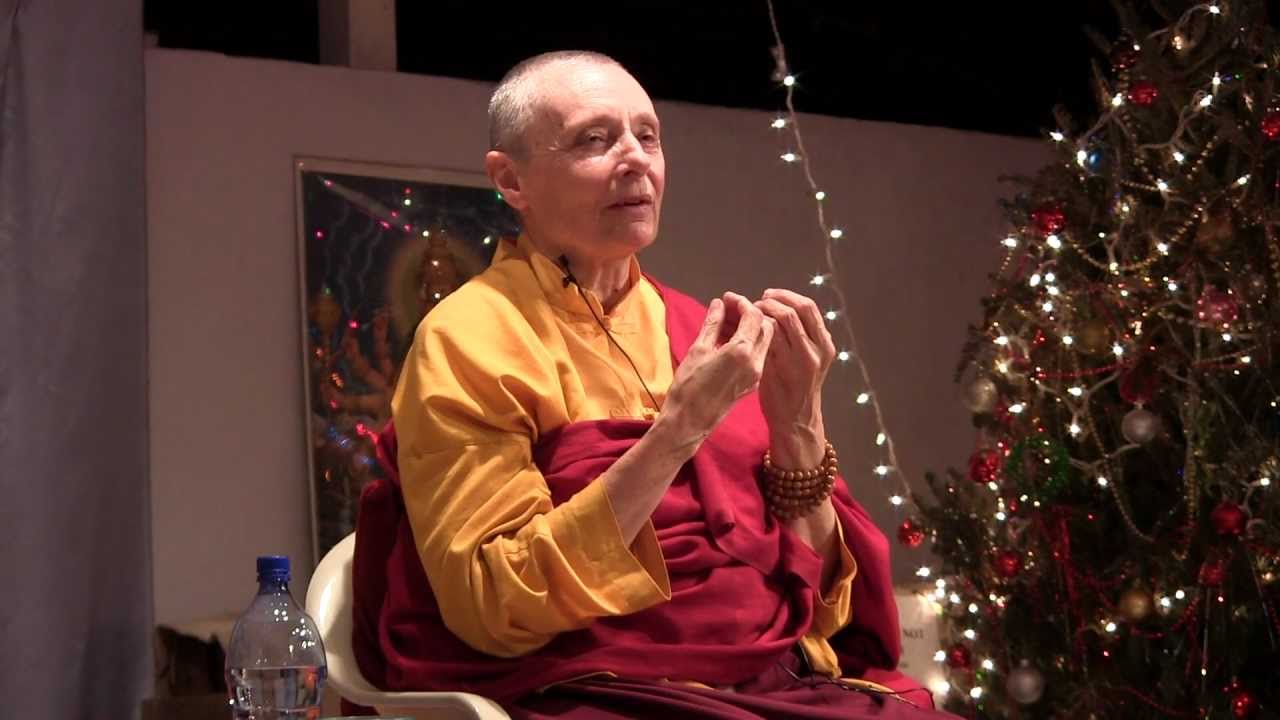Jetsunma Tenzin Palmo is a wonderful teacher.
I have only listened to part of this recording so far, but I am very impressed. I was really pleased to hear the instruction about keeping the tongue touching the upper palate. From Qigong training, I learned that without this connection it is possible for Qi to build up in the head during meditation, which manifests by mental and physical effects that are not conducive to the practice. Subsequently, I encountered meditators who mentioned they were having such difficulties (e.g. lightheadedness, bright, flashing lights when eyes are closed, even fainting), and this tongue placement resolved their difficultes.
However, I have recently attended meditation sessions where the instructions included letting the tongue relax and lie on the bottom of the mouth. I quietly disobeyed, but I tried to talk to the teacher about it later, and they had no rationale behind this instruction, other then trying to relax everything that is possible to relax without collapsing.
So I am wondering if there is support for either approach from EBT or the cultural environment of that time.
I can’t recall reading anything in Sutta related to keeping the tongue in a particular place when in meditation.
See MN20:
https://suttacentral.net/mn20/en/sujato
“If, while he is giving attention to stilling the thought-formation of those thoughts, there still arise in him evil unwholesome thoughts connected with desire, with hate, and with delusion, then, with his teeth clenched and his tongue pressed against the roof of his mouth, he should beat down, constrain, and crush mind with mind.
When, with his teeth clenched and his tongue pressed against the roof of his mouth, he beats down, constrains, and crushes mind with mind, then any evil unwholesome thoughts connected with desire, with hate, and with delusion are abandoned in him and subside.
With the abandoning of them his mind becomes steadied internally, quieted, brought to singleness, and concentrated.
Just as a strong man might seize a weaker man by the head or shoulders and beat him down, constrain him, and crush him, so too…when, with his teeth clenched and his tongue pressed against the roof of his mouth, a bhikkhu beats down, constrains, and crushes mind with mind…his mind becomes steadied internally, quieted, brought to singleness, and concentrated.”
In particular, this is described at about 1:08, as one point of the seven point posture of Vairochana, e.g. Subject: Seven Point Posture of Vairochana
So this website above mentions “Sharavakabhumi”. Does anyone know what this is?
Thanks.
What I remembered was teeth clenched.
![]()
I think the Bahubhūmika section (?) of the Yogācārabhūmiśāstra.
Ah that’s interesting. Wikipedia agrees with you 
